Abstract
1. One hundred and seventeen healthy new-born babies weighing between 0·9 and 4·8 kg at delivery have been studied during the first ten days of life, and sixteen of these babies have been studied serially for 6 weeks after birth. The babies lay supine in a draught-free environment (air speed 4-5 cm/sec) of moderate humidity. The operative temperature was between 26 and 38° C for the babies who were studied naked.
2. Total non-evaporative heat loss was calculated from simultaneous measurements of oxygen consumption, evaporative water loss and the concomitant change in mean body temperature.
3. Approximately 10% of the total body surface area was in contact with the mattress or floor. Conductive heat loss accounted for only about 5% of all non-evaporative heat loss when the naked baby was lying on a thick foam mattress, but for as much as 25% when the baby was lying in a water-jacketed chamber with a floor of clear plastic ∼ 5 mm thick.
4. Insulation to heat loss by convection and radiation varied with environmental temperature. Total specific insulation was low in a warm environment when the naked baby vasodilated, and rose by between 16 and 25% to a maximum in an environment of 31° C. It decreased significantly when the baby became physically active in environments with a temperature less than this.
5. Total specific insulation in an environment of 31° C varied with body size: it averaged 0·156° C.m2.hr/kcal in seven naked babies weighing 0·9-1·2 kg, rose to 0·190° C.m2.hr/kcal in twelve babies weighing 1·8-2·2 kg, and averaged 0·201° C.m2.hr/kcal in the thirty-four babies who weighed over 3 kg. Tissue insulation accounted for 23% of this total specific insulation in the smaller babies, and about 28% of the total in babies weighing over 3 kg.
6. Clothing ten babies in a vest, napkin and long cotton nightdress increased the total specific insulation by an average of 0·23° C.m2.hr/kcal.
Full text
PDF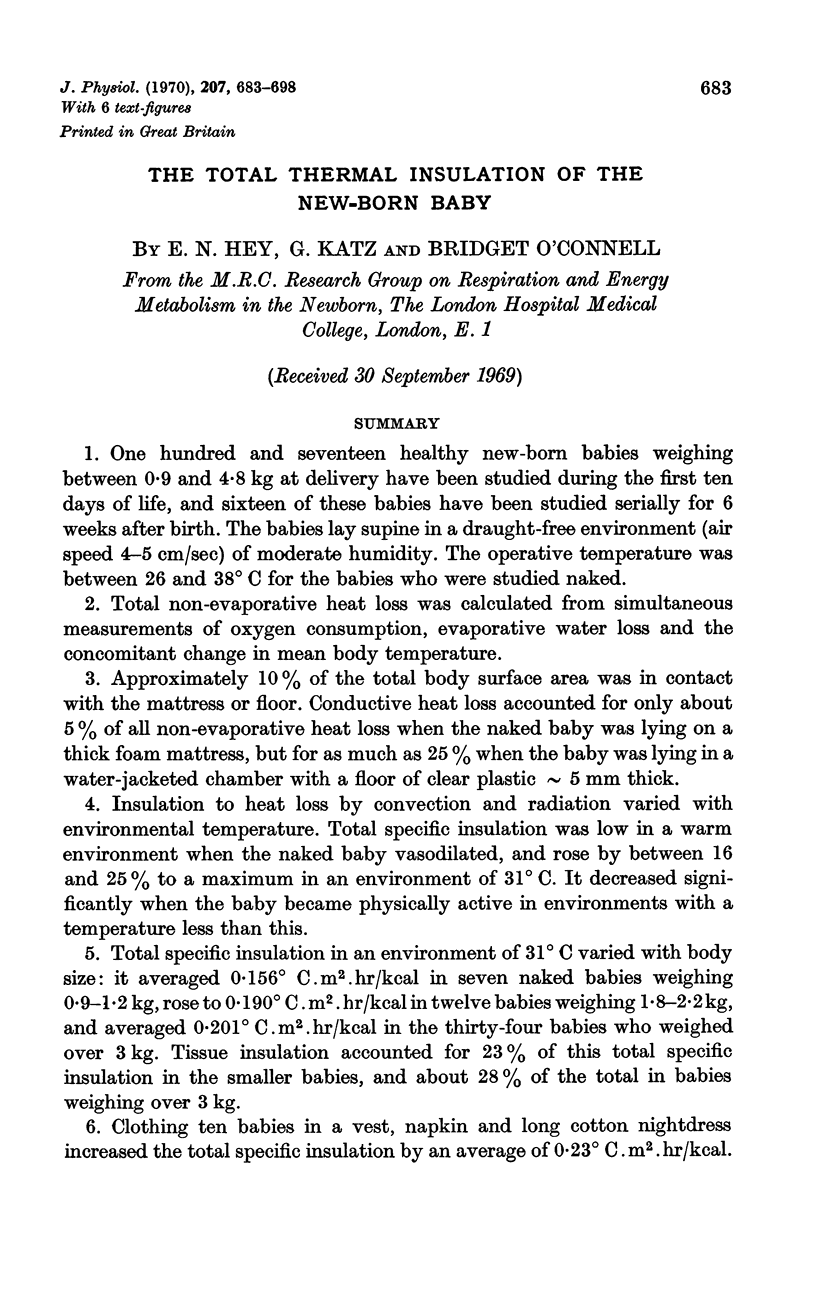

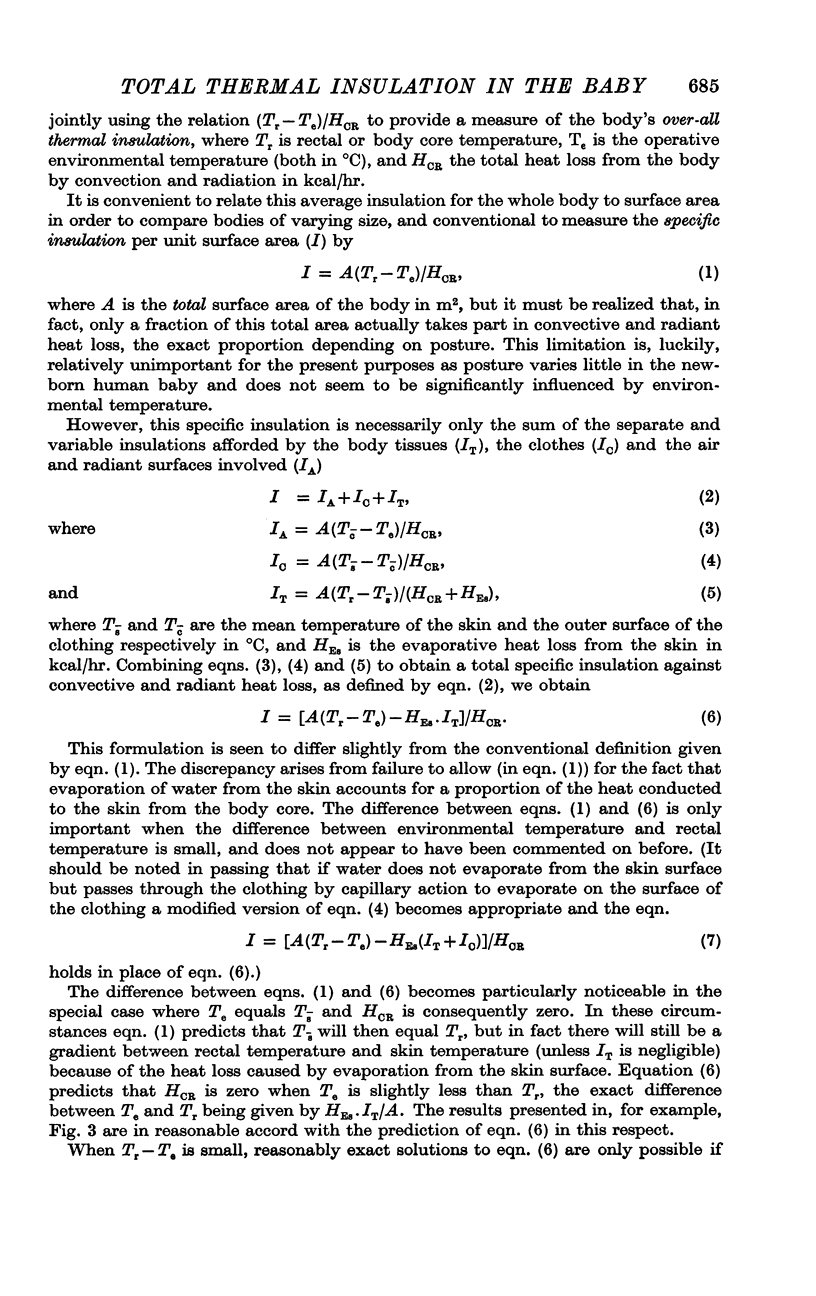
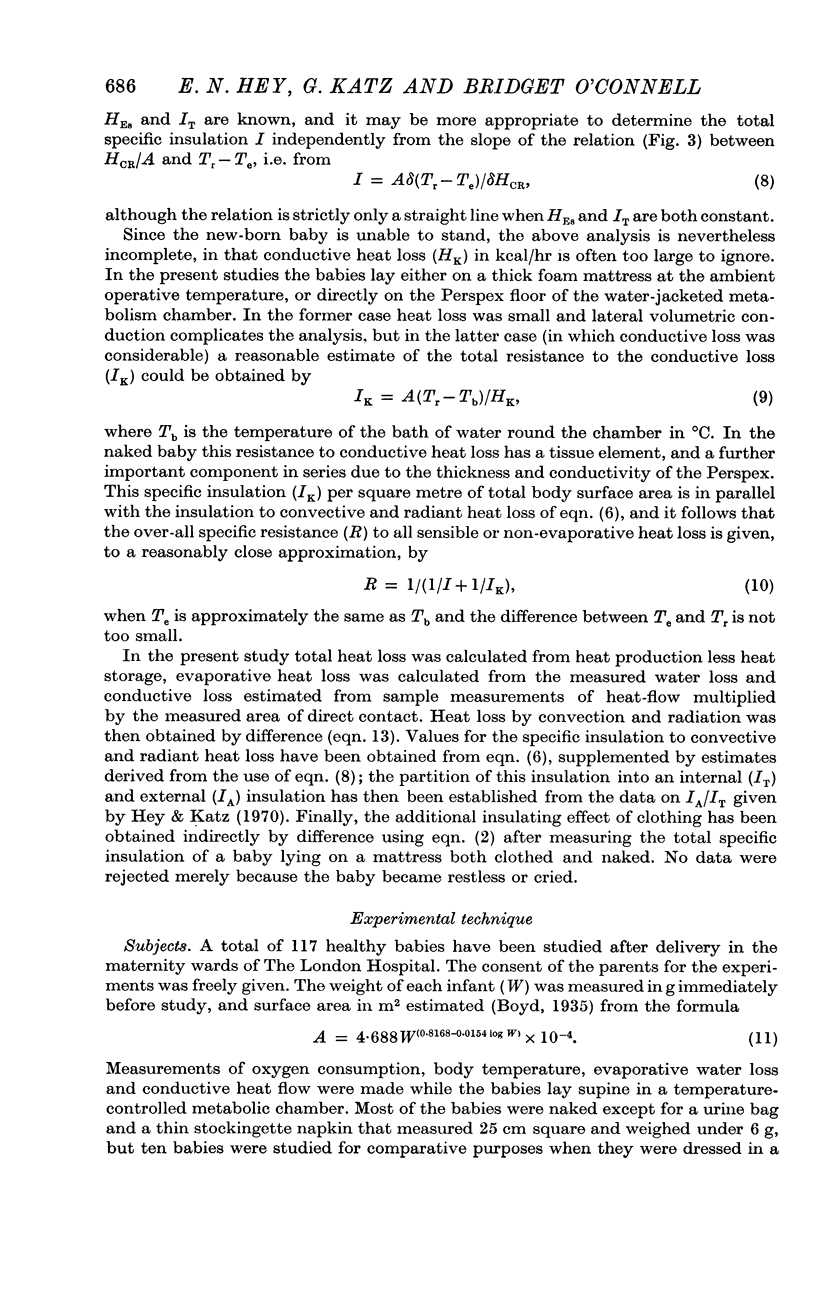
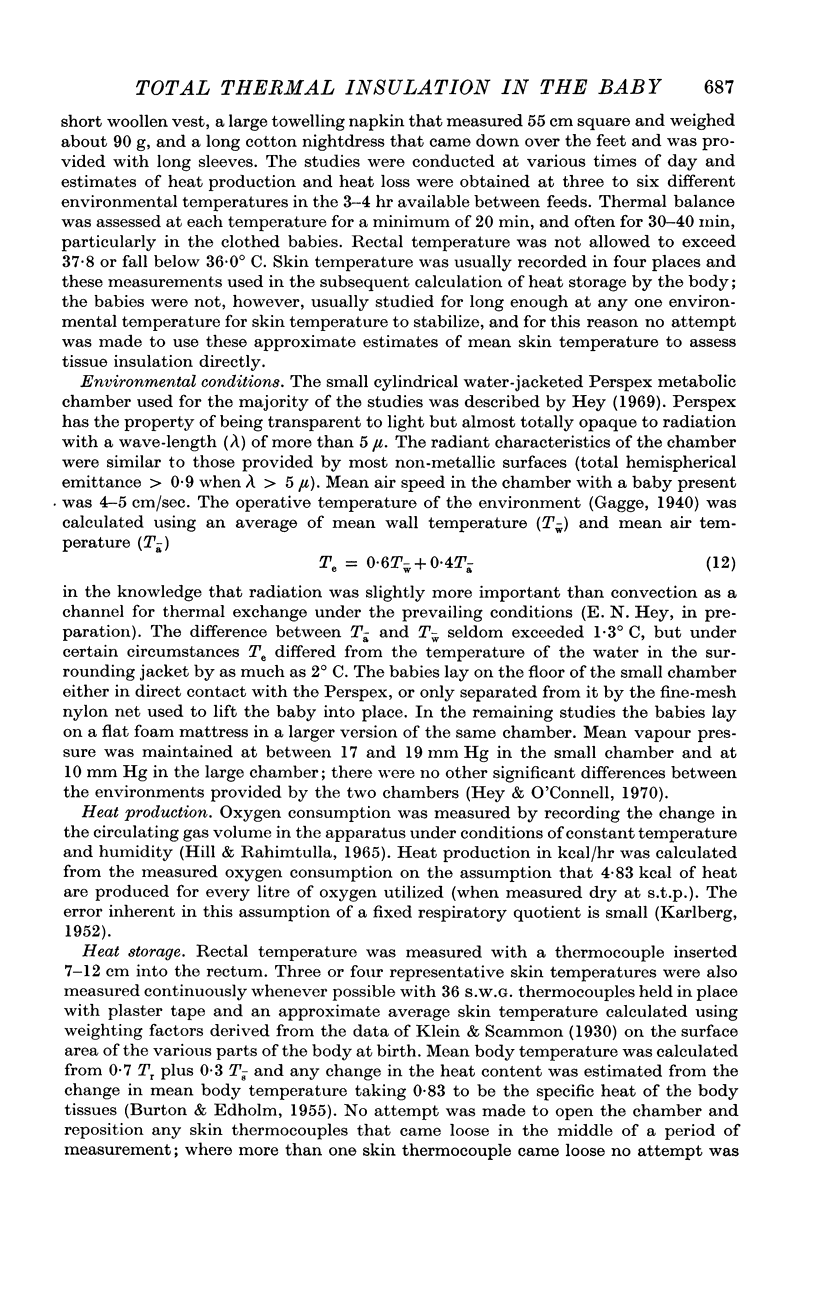
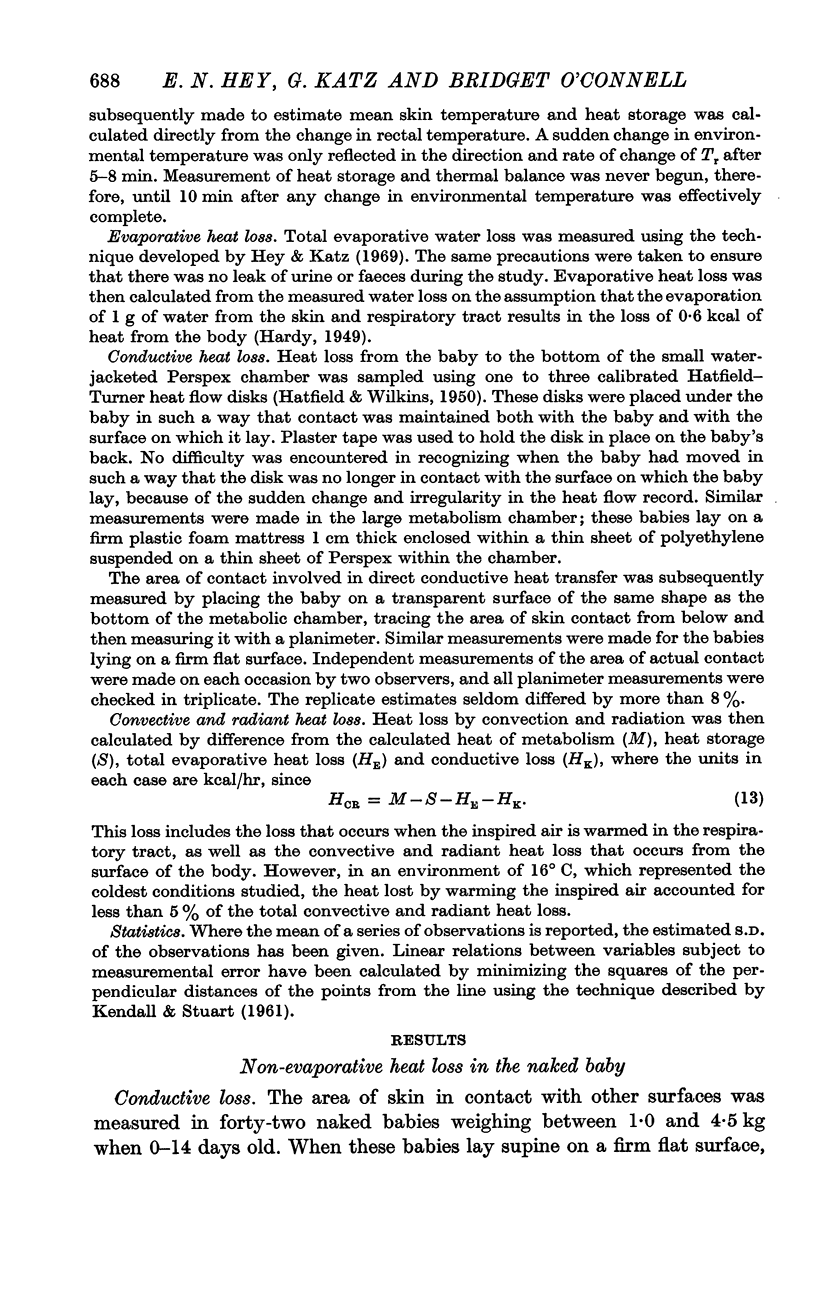

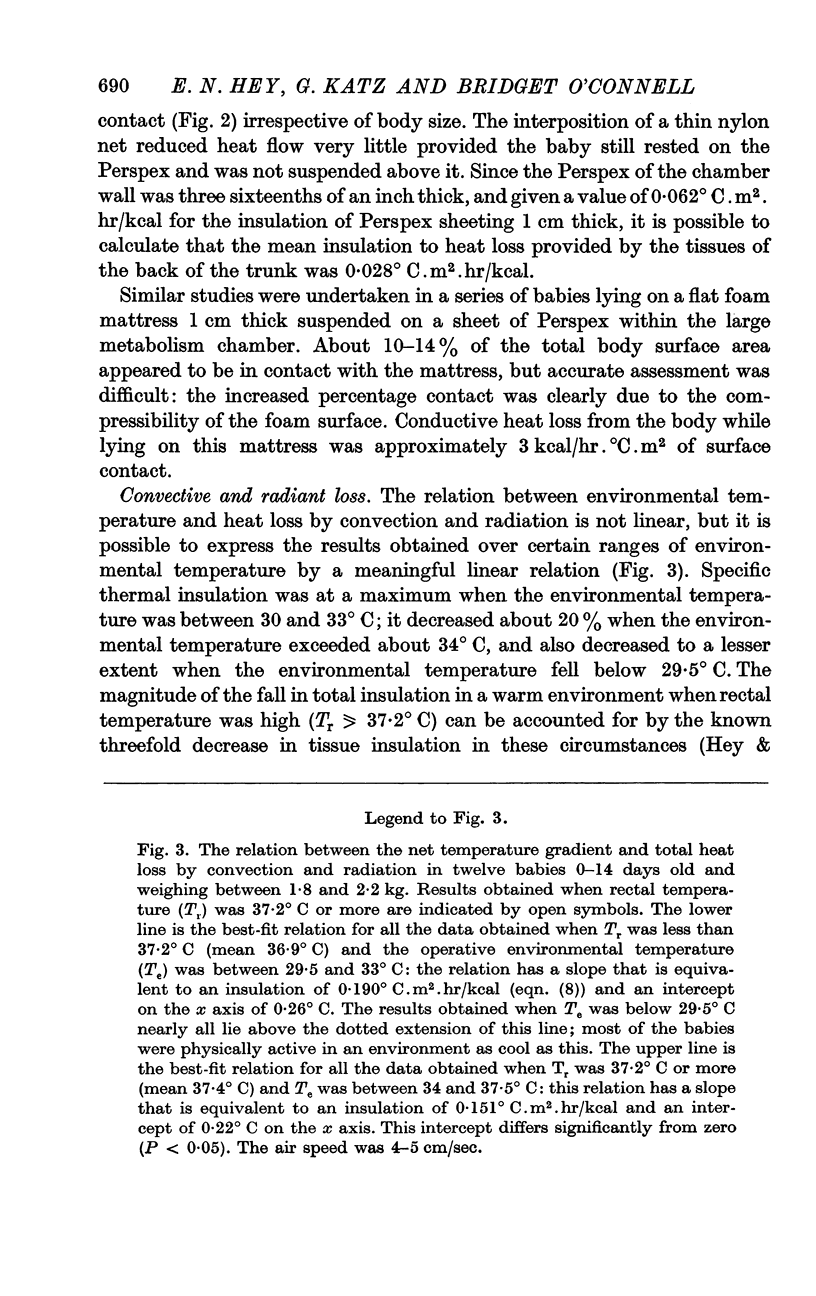
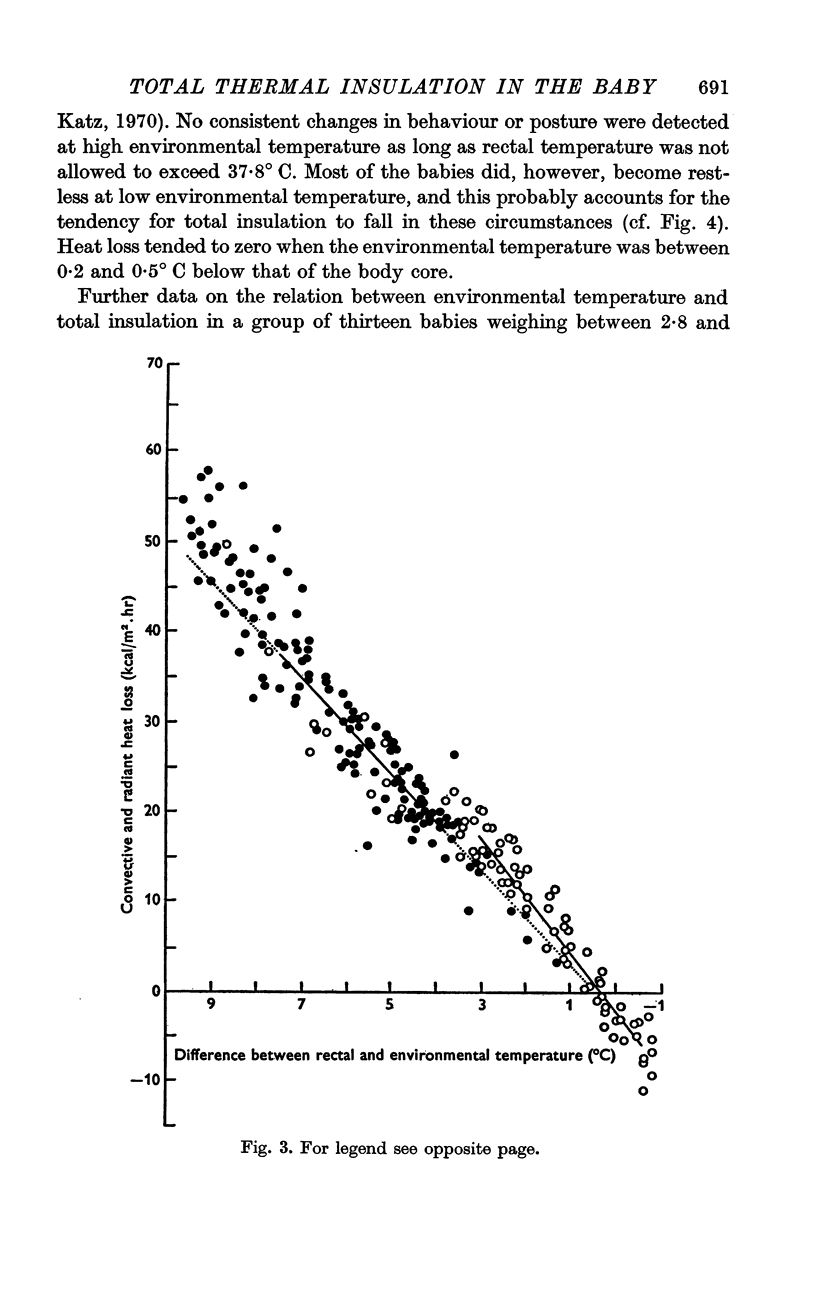
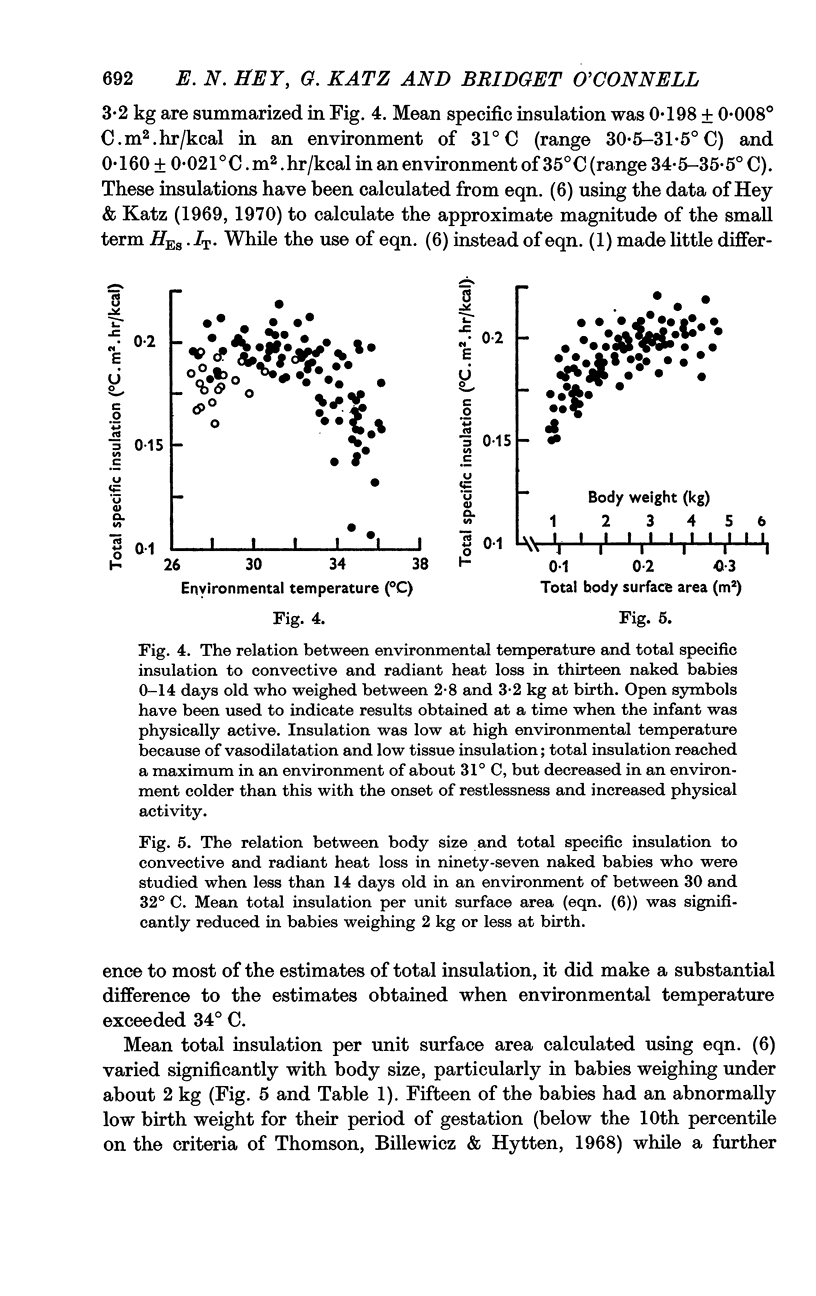
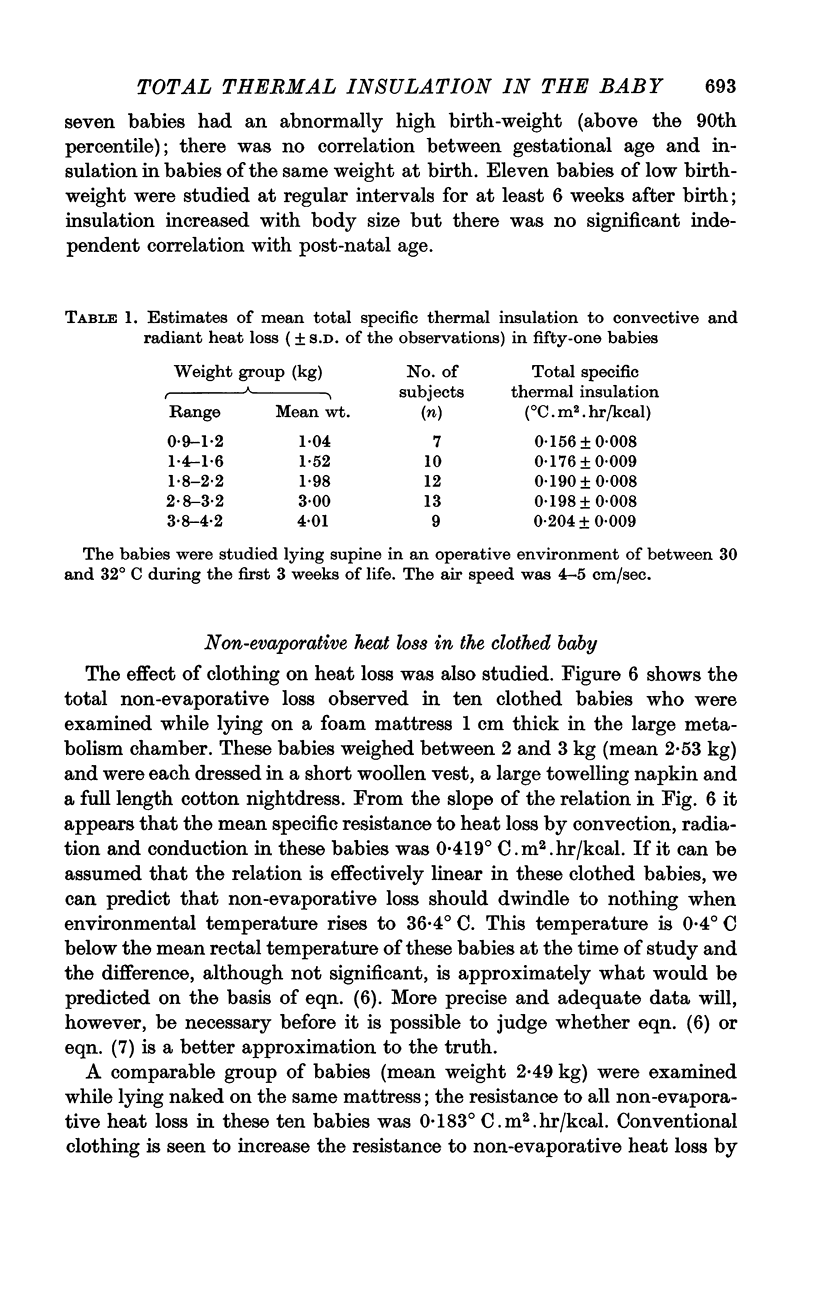
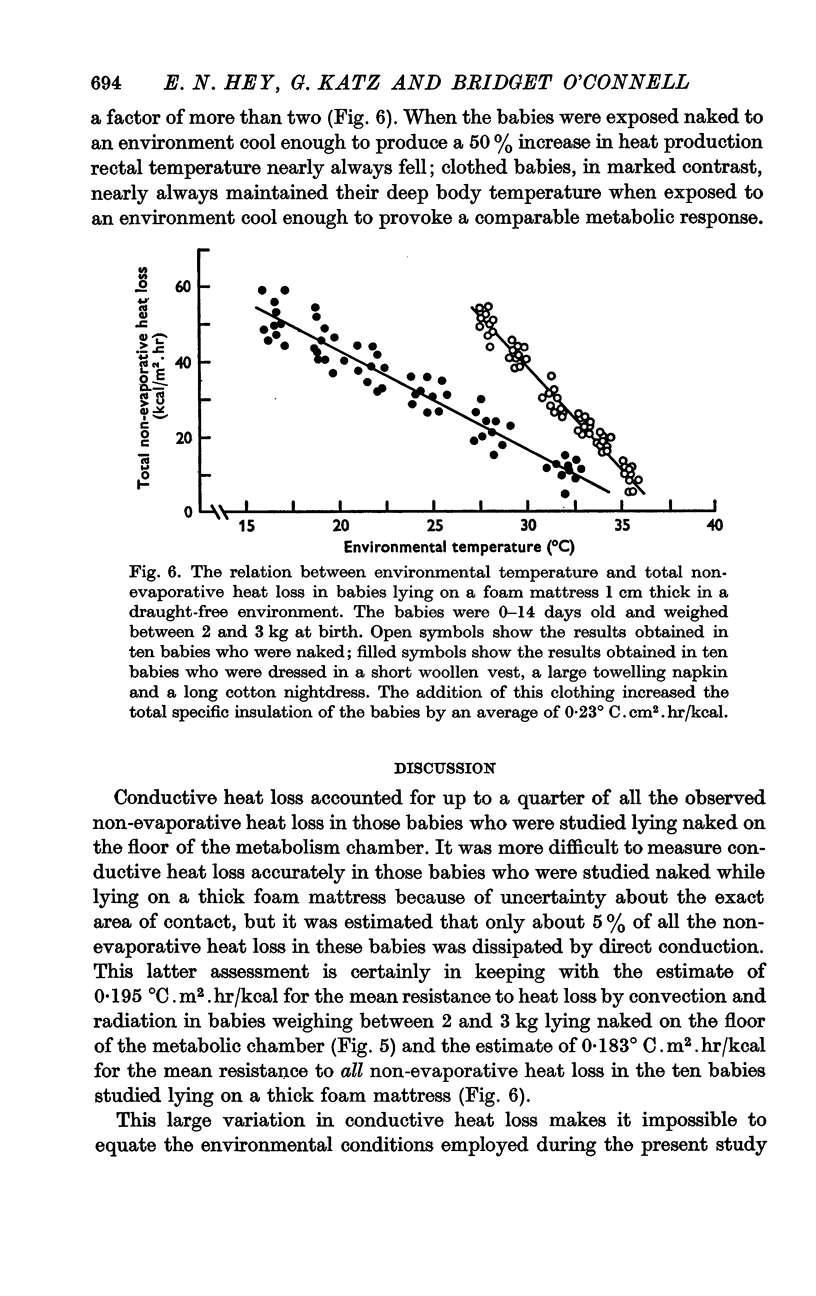
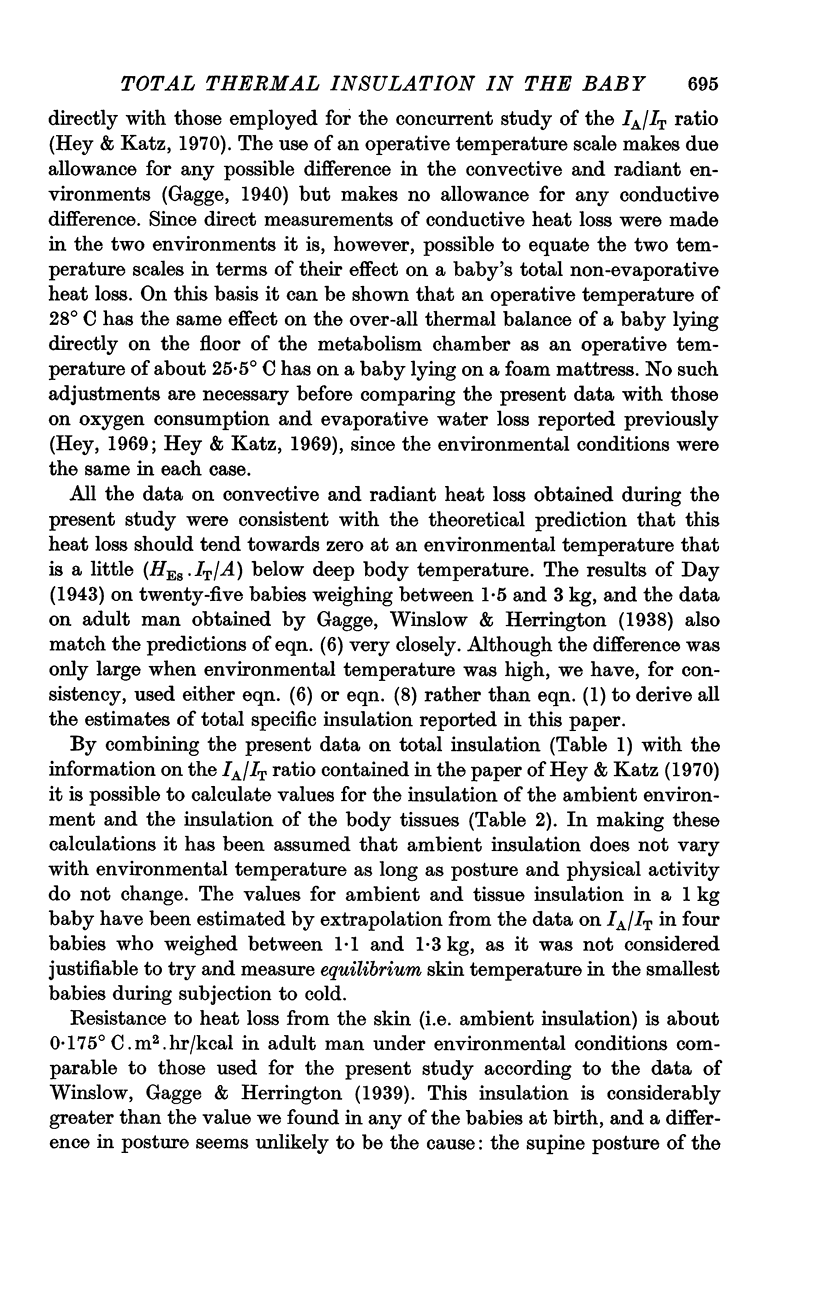
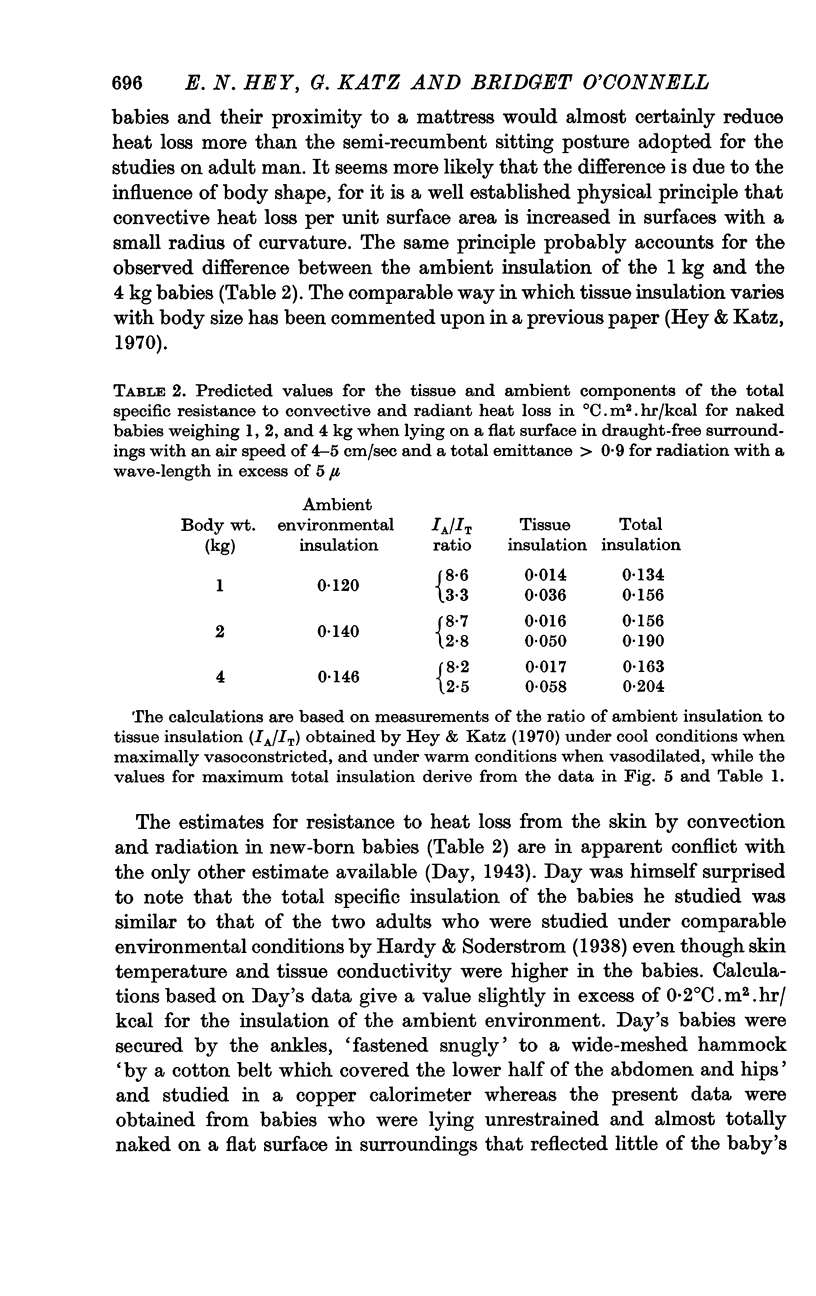
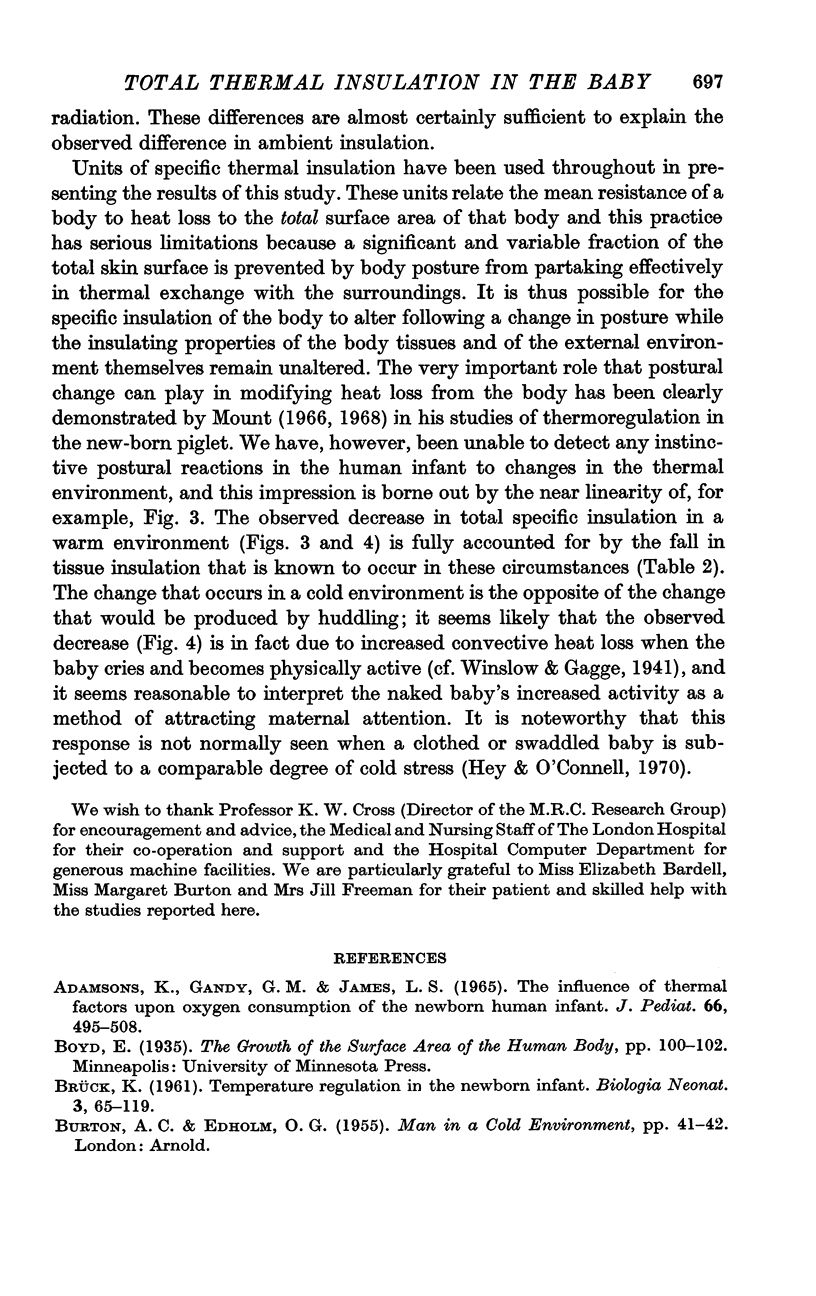

Selected References
These references are in PubMed. This may not be the complete list of references from this article.
- ADAMSON S. K., Jr, GANDY G. M., JAMES L. S. THE INFLUENCE OF THERMAL FACTORS UPON OXYGEN CONSUMPTION OF THE NEWBORN HUMAN INFANT. J Pediatr. 1965 Mar;66:495–508. doi: 10.1016/s0022-3476(65)80114-7. [DOI] [PubMed] [Google Scholar]
- Hey E. N., Katz G. Evaporative water loss in the new-born baby. J Physiol. 1969 Feb;200(3):605–619. doi: 10.1113/jphysiol.1969.sp008711. [DOI] [PMC free article] [PubMed] [Google Scholar]
- Hey E. N., Katz G. The range of thermal insulaton in the tissues of the new-born baby. J Physiol. 1970 May;207(3):667–681. doi: 10.1113/jphysiol.1970.sp009087. [DOI] [PMC free article] [PubMed] [Google Scholar]
- Hey E. N. The relation between environmental temperature and oxygen consumption in the new-born baby. J Physiol. 1969 Feb;200(3):589–603. doi: 10.1113/jphysiol.1969.sp008710. [DOI] [PMC free article] [PubMed] [Google Scholar]
- Hill J. R., Rahimtulla K. A. Heat balance and the metabolic rate of new-born babies in relation to environmental temperature; and the effect of age and of weight on basal metabolic rate. J Physiol. 1965 Sep;180(2):239–265. doi: 10.1113/jphysiol.1965.sp007701. [DOI] [PMC free article] [PubMed] [Google Scholar]
- Mount L. E. Basis of heat regulation in homoeotherms. Br Med Bull. 1966 Jan;22(1):84–87. doi: 10.1093/oxfordjournals.bmb.a070444. [DOI] [PubMed] [Google Scholar]
- Thomson A. M., Billewicz W. Z., Hytten F. E. The assessment of fetal growth. J Obstet Gynaecol Br Commonw. 1968 Sep;75(9):903–916. doi: 10.1111/j.1471-0528.1968.tb01615.x. [DOI] [PubMed] [Google Scholar]


